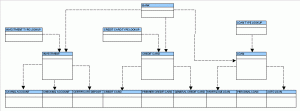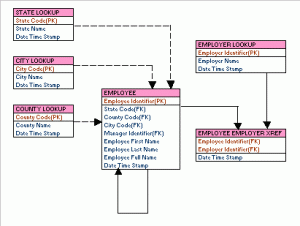Data Modeling Development Cycle
Following are the important phases in the Data Model Development Life Cycle.
- Gathering Business Requirements
- Conceptual Data Modeling
- Logical Data Modeling
- Physical Data Modeling
- Development of the schema or the database
- Maintenance of the data model as per the changes.
1. Gathering Business Requirements – First Phase:
Data Modelers have to interact with business analysts to get the functional requirements and with end users to find out the reporting needs.
2. Conceptual Data Modeling (CDM) – Second Phase:
This data model includes all major entities, relationships and it will not contain much detail
about attributes and is often used in the INITIAL PLANNING PHASE. Please refer the diagram below and follow the link to learn more about Conceptual Data Modeling Tutorial.
3. Logical Data Modeling (LDM) – Third Phase:
This is the actual implementation of a conceptual model in a logical data model. A logical data model is the version of the model that represents all of the business requirements of an organization. Please refer the diagram below and follow the link to learn more about Logical Data Modeling Tutorial.
4. Physical Data Modeling (PDM) – Fourth Phase:
This is a complete model that includes all required tables, columns, relationship, database properties for the physical implementation of the database. Please refer the diagram below and follow the link to learn more about Physical Data Modeling Tutorial.
5. Database – Fifth Phase:
DBAs instruct the data modeling tool to create SQL code from physical data model. Then the SQL code is executed in server to create databases.



